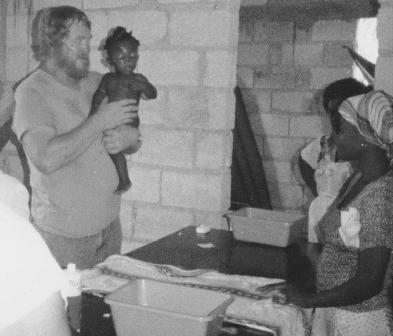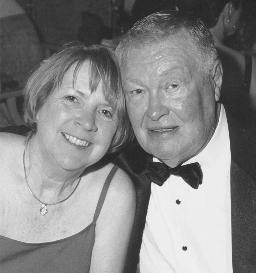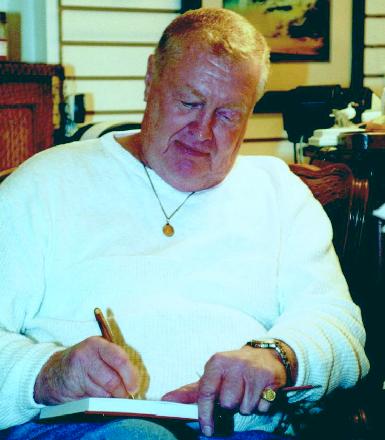El Rojo: The
Hijacking Pt 4
CIA Plot or Temporary Insanity?
A true story by Christian
Livemore
“There are itches that only Special Forces can scratch.”
— Former Special Forces commander Lieutenant General Bill Yarborough
The CIA had an all-consuming itch in the 1960s — to eliminate Fidel Castro,
or
if they could not do that, to depose him as “El Commandante” of Cuba.
When the CIA had an itch to scratch, they often called on Special Forces.
When Special Forces Green Beret Reds Helmey told his wife on January 11,
1969
that he was going to the airport to hijack a plane to Cuba, he told her
he was part of
a CIA and FBI plot to assassinate Fidel Castro. But the Savannah jury who
acquitted
him in 15 minutes found him not guilty by reason of temporary insanity.
So which is it? Both versions of the story have inconsistencies that are
difficult to reconcile.
Several scenarios can be drawn from the available information.
Scenario One: Reds Helmey suffered a temporary mental break as a result
of a
concussion the month before the hijacking and, thinking he was part of
a CIA
and FBI plot to assassinate Fidel Castro, hijacked the plane to Cuba.
Possible? Maybe. The jury found him not guilty by reason of temporary insanity,
and this
explanation would account for what on its face seems a roundabout way at
best to kill Castro.
But it does not account for several details of the story, like the chance
meeting Helmey had at Christmastime 1965 with an old buddy, John Arsenault,
who was flying with Air America, an airline secretly owned by the CIA that
flew reconnaissance, food drop and transport missions in Southeast Asia
throughout the U.S. prosecution of the Vietnam War. Arsenault gave Helmey
addresses and contact information for the CIA and Air America.
Like the two CIA agents who made contact with Helmey in a Washington, D.C.
bar
several months before the hijacking. Helmey and his friend and Special
Forces
colleague Paul Hammock, who confirms the contact, recognized the men as
CIA
observers at a class in POW camp survival and communist interrogation
techniques Helmey had taught the day before at Fort A.P. Hill in Virginia.
Like the manila envelope Helmey received in the mail several months later
containing a photograph of Fidel Castro and Soviet premier Nikita Kruschev
embracing on a Harlem Street. Fidel’s image had a line drawn through it,
and
the words Alpha 66 were written across the top of the photo. Alpha 66 is
a
paramilitary group made up of Cuban exiles, with close ties to the CIA.
According to US News and World Report, Alpha 66 has launched 60 attacks
and 24 infiltration missions against Cuba since 1961.
Like the woman introduced to Helmey that night in the D.C. bar by the CIA
agent and who had first called Helmey by the Spanish nickname he would
later
use to announce his arrival in Cuba to Castro: El Rojo. This woman showed
up
at Helmey’s business on that January 11 in 1969, five hours before Helmey
hijacked the airplane.
And like an interesting little side tidbit: Another man — not Helmey —
with
the name Rojo, Angel Hernandez Rojo, was reputed to be a top CIA agent
in charge of Cuban exile activities in Miami in 1970.
If the details don’t exactly fit Scenario One, there’s always Scenario
Two: That Reds Helmey was in fact directed by the CIA to hijack a plane
to
Cuba to assassinate Fidel Castro.
Possible? Given the fact that the CIA once attempted to kill Fidel Castro
with
a poisoned wet suit, anything is possible. But it leaves more questions
than answers.
Why would Helmey, with all his jump training and Special Ops skills, be
instructed to hijack an airplane and so flamboyantly announce to Fidel
Castro
his pending arrival? This tactic would seem to ensure Helmey’s failure
and
imprisonment, if not summary execution. It seems far more plausible that
Special Forces would drop him by parachute 1,000 feet from the beach, from
which point Helmey would swim ashore and conduct a covert search for Castro.
And why would Helmey arm himself only with a Model 1918 Double Action Smith
and Wesson pistol that was not loaded and not even definitely in working
order?
Why wouldn’t he bring more state-of-the-art weaponry? And why, when Helmey
handed the gun to the flight engineer so he could have a drink, did the
flight crew
not overpower the completely unarmed hijacker? Why did the engineer then
return
the pistol to Helmey when he had finished his drink? And why, when Helmey
handed
the pistol to the pilot as he prepared to face the Cuban G2 Security Police
on the runway,
did the pilot hide the gun?
All of which brings us to a third scenario: That Reds Helmey was on a Special
Forces mission at the behest of the CIA, but for a different reason than
the one given.
By 1960, the U.S. government was preternaturally concerned over the developing
situation in Fidel Castro’s Cuba. They made the decision that Castro had
to
go. When the Bay of Pigs ended in spectacular defeat and Operation Mongoose
was aborted, they did not give up. They merely changed their approach.
But why Castro? Why not Papa Doc or Rafael Trujillo or any of the other
Latin
American dictators whose brutal regimes shone like stars in the dictatorial
firmament?
“Castro was exporting revolution,” Helmey says. “Something had to be done.
A lot of kids were going down there to get trained.”
Indeed, Castro was using his influence to foment Cuban-style revolutions
throughout South America. How long could it be, American intelligence thinking
went at that time, before these revolutionaries were exported to U.S. shores?
In fact, in a way it was already beginning. The revolution would not be
televised,
but by the mid-60s, Black Panthers were making their way to Cuba in large
numbers
to receive the revolutionary training Cuba was providing. Helmey was transported
with
several Black Panthers the night he arrived in Cuba, and interacted with
several of them,
including Carl Davidson, while in prison there, “Hados,” as the prison
in which Helmey
was held is called.
According to the United States Army’s Special Forces recruitment Web site,
Special Forces soldiers are trained in, among other skills, “special reconnaissance
and information operations.”
When Special Forces wants to gather information about an adversary country,
they want a complete picture. They want information not just about that
country’s
military strength and nuclear capability, but also about the country’s
religious situation,
its schools, its prisons. By the mid-1960s, the United States wanted a
picture of the
prison situation in Cuba, and wanted information as well about the Black
Panthers
traveling there for military training.
Given this scenario, all the holes in the story begin to fill up.
“I will say this: Reds was a very well-trained person in areas that even
I
wasn’t trained in,” says friend and Special Forces colleague Hammock.
Well-trained indeed. West Point, Airborne-qualified, Special Forces.Helmey
also had
highly specialized training in POW camp survival, communist interrogation
techniques,
and escape and evasion. So skilled was Helmey in these areas, in fact,
that he was often
tapped to instruct other Special Forces soldiers.
If the CIA wanted to covertly gather information about the prisons and
Black Panther
activities in Cuba, what better way than to send a Special Forces soldier
down there to
get himself thrown into prison and interact with these Black Panthers?
And what better
man to send than a soldier of Helmey’s extraordinary training?
“I don’t know what happened,” Hammock says, “but if I was the CIA and I
wanted
to send a person into another country for whatever reason, I can’t think
of a
better person to send than Reds.”
There is no way to know for certain what happened when Helmey hijacked
that
airplane, or why. One reason? The cockpit recording of that flight has
disappeared,
despite the fact that it is FBI policy to seize cockpit recordings of any
hijacking.
It is unclear if this tape was seized by the FBI. If it was,
the recording was never
played at trial or made public. United Airlines General Attorney John Adler
wrote
Helmey’s attorney Fred Clark that there was no record of the tape, and
concluded
that it had been erased as per normal airline procedure.
So which was it, CIA plot or temporary insanity? When asked, Helmey plays
hard to get.
“I had to be crazy to do what I did,” he shrugs. “Even if the CIA was involved.”
In Helmey’s entire life, the hijacking was the first and last time he ever
violated the law.
“He is probably the most patriotic person I have ever known,” says Hammock.
“We have had some good times, maybe some mischievous times, but we
never got into any trouble.”
Helmey’s longtime friend, prominent Savannah attorney Sonny Seiler, says
that
Helmey was a model citizen up until the moment he hijacked the airplane.
“He would give you the shirt off his back if he thought you needed it
more than he did,” Seiler says.
Seiler believes it was the blow to the head at the planing mill that drove
Helmey to it.
“He wasn’t quite right for a while after that,” Seiler says.
But Helmey’s wife Maxine disagrees. Though not his wife at the time, Maxine
saw Helmey at a New Year’s Eve party 11 days before the hijacking, over
two
weeks after the blow to the head Seiler says made Helmey “not quite right.”
She says he was behaving normally.
“He was the same old Reds,” she says. “He seemed like he always did:
outgoing, charming, friendly.”
Seiler says that eventually the symptoms of what he maintains was Helmey’s
temporary insanity completely disappeared, and Helmey became his old self
again. Helmey agrees. But when asked at what point he felt he had completely
recovered, Helmey flashes a coy smile.
“When the jury found me not guilty,” he says.
In another strange twist, Helmey’s military status was fully reinstated
after his acquittal,
and through the influence of no less a person than General William Westmoreland.
To this day, Helmey remains the only individual ever acquitted of the
hijacking of a U.S. commercial airliner.
After his acquittal, Helmey turned his attention to affecting change in
another way.
He traveled to Haiti as part of an American humanitarian mission to provide
medical
assistance and relief to the impoverished citizens of that country.
.......................
He assisted in surgeries and other relief efforts, and even brought a drill
along on one trip
to try to set up a clean water system for the people there. Maxine, who
became Helmey’s
wife in 1982, joined him on a second trip to Haiti, where she taught art
classes to the children.
.......................
“I’d seen a lot of death, but not on the scale I saw in Haiti,” Reds says.
Especially the children.
Less than 400-500 miles from this country, and you wonder why.”
In all, Helmey made five trips to Haiti. These days, Helmey is focusing
on a new challenge: writing.
.......................
His book
“The Lemon Dance,” his account of the hijacking and what led up
to it, is on the shelves,
and there’s even a movie deal in the works. Helmey is working on a new
project, “Freda’s Piano,”
a fiction book and homage to his mother. He hopes to complete it sometime
next year.
But Helmey’s eyes still burn brightly when he speaks of the country he
loves,
and he still entertains dreams of serving.
“I’d go today if they’d let me,” Helmey says.
And how does he feel now about Operation Mongoose and U.S. activities in
Cuba?
“You’ve got to change peoples’ hearts,” he says. “Do you assassinate them?
No.
Because there’s always somebody ready to take their place. I think if people
could sit down
and talk, we could solve a lot of problems. It’s about breathing the air,
live and let live.”
back to
bartcop.com
Privacy Policy
.
.


